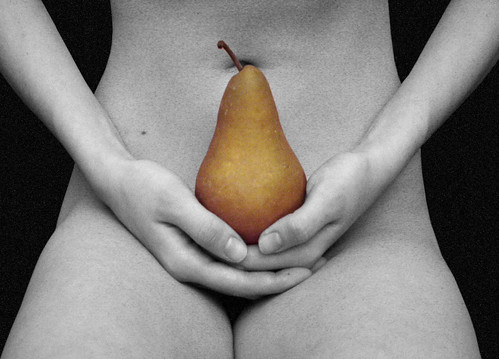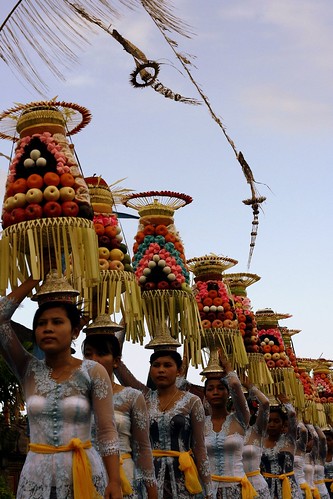Pure Turquoise
Yet it is not until one gets beyond that hair-flaunting that a dirty, dusty, ephemeral scent of skin that just dried from a long soak in sulfur springs (or perhaps an improvised outdoor spa treatment of a fool-body warp in salty black mud), that the grapefruit and patchouli accord can be seen in a completely different light.
Pure Turquoise opens clean, fresh, watery and fruity that it is almost the modern cliché that everyone stopped looking forward to about five years ago. Although the pyramid for this fragrance is said to include many exotic and unfamiliar notes – I am mostly noticing grapefruit, lily of the valley, patchouli and an overall flat and non-descript fruity-floral freshness.
This is quite in cotrast to what I would have expected from a scent including notess such as cactus flower, indigo violet, night-blooming cereus (AKA Queen of the Night – that cactus that blooms only once a year, with an intense night-blooming-jasmine fragrance; I haven’t had the honour, but I wasn’t as stunned by Pure Turquoise as I imagine I would be by the Night Queen), desert lily (a lily that grows in the Mojave and Sonora deserts). I can see a desert theme threading through the selection of notes, yet I can’t quite smell it with my nose… Not only that, even the more familiar notes, which I work with everyday, such as Blugarian rose absolute and orange blossom absolute remain to reveal themselves to my olfactory bulb.
The base, dominated by patchouli, dries down to a woody skin scent. Clean, fresh, serene, but not as sterile as some others scents belonging to the fresh genre. On the other hand, it is not as sensual or wild as you might expect from a base containing rum, vanilla and silver birchwood. I am mostly smelling a clean musk and patchouli, and the latest remains of the sulfuric grapefruit still hanging to its life by the nails… The new Chypre family, as we can see, is all about being pleasant and polite. Thought there is something centering and grounding that I find in the modern, fake Chypres, and that they still are very chic in their own way - I must declare that there is none of the excitement and sense of danger or breaking the boundaries when wearing these limpid though pleasant scents. To find that, one must go back to a real Chypre, before the days of reformulations. And before the days of faking it and pretending that patchouli and vetiver are mossy. They’re not.
Pure Turquoise comes in two concentrations: eau de parfum for the poor, in a difficult to grasp cut-glass spray bottle; and pure parfum, for the spa aristocrat who loves to stack rocks over their jus. The latter crystal flacon is topped with a humongous sized turquoise stone, which unlike the beautiful one in all the posters and magazine ads, is not smooth and roundish, but cut in angular shapes (just like the bottle is), and comes in a far paler and less impressive colour.
* To the left: the EDP spray bottle accompanied by the false parfum flacon. To the right: the true parfum flacon, with the angular-cut paler turquoise stone, which is what you'll get in the box...
Top Notes: Cassis, Indigo Violet Petals, Lily of the valley, Cactus Flower,
Middle Notes: Night-Blooming Cereus, Orange Flower Absolute, Bulgarian Rose Absolute, Desert Lily
Base Notes: Patchouli, Silver Birchwood, Amber, Vanilla Bourbon, Rum.
Fetish Reviewed on Perfume Critic
Fig in Fragrance

Global warming makes Vancouver's summer feel real. And with it comes a craving for figs. I miss their tangy, fizzy sharpness. I miss their oddly refreshing green sap-milky attitude. I even miss the burning in the tongue as soon as you betray their fabulousness and decide to move on to the next victim in your daily diet.
I would spend many hours of my summer wrapping the fruit in brown paper bags, to protect it from the coveting eyes and beaks of birds. I would spend my mornings around the tree picking the first fruit that might have ripened in the heat remaining over night. I would go back there late afternoon for a snack, checking on the more fruit that ripened in the scorching sun, while frying my bare feet on the sun baked earth.
Figs are one of those fruit that if you don’t eat them fresh, you better not eat them at all. Fresh in this case means that you’ve just picked them from the tree less than an hour ago and preferably haven’t washed them either. It’s better to eat them dusty than washed. Trust me. Once you wash them, they lose both their flavour and their texture: their skin softenes and they become this characterless green sack of seeds…
Black (or “red”) figs keep better and are more marketable. Yet their flavour is often less intense or interesting in my opinion. It is the green figs that I am truly passionate about. And I’ve never seen them sold anywhere… Last summer I’ve had them after about 8 years of green fig withdrawal…
Olivia Giacobetti’s Philosykos for Diptyque is by far the most satisfying fig scent I’ve ever encountered. It reminds me of the whole fig picking experience, tongue burning, milky sap and all. I’m sure by now you are well aware of my partial opinion about it. This summer I am enjoying both the scent as well as the “Figuer” from Diptyque. I got it at Lola, and the first time was very unfortunate: the candle has no scent at all, unless you happened to stick your nose to the flame. Not even than, really. Christina was kind enough to take it back (this is her personal favourite too, and after (not) smelling for herself the poor performance of that particular specimen, has given me a replacement candle, which I am enjoying tremendously.
But for those of you unmoved by Philosykos or simply looking for other fig scents to indulge in this summer instead of the real thing, there are quite a few to choose from, as a quick search on Make Up Alley may turn out.
While I can’t claim to have tried them all (well, I haven’t!), I can definitely bring a few to consider and which I would like to re-visit this summer:
Aftelier's Fig re-creates the experience of overripe black figs, the kind that is actually worth trying even when not freshly picked. An accord of resinous yet sweet fir absolute along with jasmine sambac and yuzu creates this pleasant illusion for a moment in the opening. In my experience, the FIR is the star of FIG, and the jasmine creates a perfumey impression, which dries down to a powdery sweetness.
Jo Malone’s Wild Fig & Cassis: As the name suggest, you get two fruit here: green fig and black currants. I found it to be a little to fruity to my liking, yet I think it makes an interesting layering companion to Black Vetyver Café.
Fresh Index Fig Apricot: Like most of the Fresh line, I find this one to be yet another artificially delicious fruity aroma with too little substance to back it up and account for its perfumeness. The base is musky and head achingly artificial. Still, it’s one of my more favourite combinations in the line (the other being Pomegranate Anise and Redcurrant Basil).
Figue Amere by Miller Harris: If you’re looking for a more sophisticated fig, this might be an intriguing challenge for the fig lover: it is one of the most perfumey of all the fig scents I’ve tried, besides Aftelier’s FIG. Bittersweet and salty at once, it feels dusky rather than summery and reminds me of salt-dipped green almonds, myrrh and heliotrope more than figs...
 Io Capri, on the other hand, is an uncomplicated summer pleasure of wild fig and tea leaves. To me this smells mostly of green tea, and while being not in the least sophisticated it makes perfect sense for summertime, when we tend to be a little more extrovert and don’t need the additional distraction of a contemplative fragrance. Io stays the same on my skin, light and fresh and delightful, both unchanged and extremely long lasting yet at the same time never overpowering.
Io Capri, on the other hand, is an uncomplicated summer pleasure of wild fig and tea leaves. To me this smells mostly of green tea, and while being not in the least sophisticated it makes perfect sense for summertime, when we tend to be a little more extrovert and don’t need the additional distraction of a contemplative fragrance. Io stays the same on my skin, light and fresh and delightful, both unchanged and extremely long lasting yet at the same time never overpowering.Another fig and tea combination, but more perfumey than Io is Fig-Tea by Parfums de Nicolaï
As a whole, I find Patricia de Nicolaï's fragrances to be quite perfumey.
Feel free to share your favourite fig scents with me here. I would love to hear your opinions and recommendations for any fig scents I haven't smelled or heard of but should!
And last but not least is the first fig perfume to be released, also by Olivia Giacobetti – this time for l’Artisan Parfumeur, which reportedly proceeded all the other scents I’ve mentioned. While it is indeed a very fine fragrance, I believe that Ms. Giacobetti got it perfect the second time around with Philosykos. To me, Premier Figuier is a tad too melancholy, and too green with its mastic leaf top notes, and it is a tad too fleeting as well. Nevertheless, the coconut milk base makes it my second choice after Philosykos when a green fig fix is required.
Sira des Indes
The latest from Patou, Sira des Indes, signifies the hope of the return of classic perfumery in at least some of its glory. Despite the rundown of notes for Sira des Indes, which seems quite conformist and girly in an “I’ve Smelled This Fruity Floral Before” way, it is not.
Well, let me back off a little by saying that there is something familiar about it; familiar in a good way. First of all there is the familiarity of cooked fruit – primarily banana and pear. I can’t say I am noticing any berries and the bergamot is very muted as well. The cardamom, on the other hand, is there to complement the banana in a warm, seductive way, much as it does so in the dessert that inspired this perfume.
Than, there is also something classic about it. Perhaps I am reminded of the indolic jasmine of Joy, of seductively cloying narcissus as in Narcisse Noir and Vol de Nuit. There is also some champaca, and in this context it is a continuation of the banana-semolina pudding: fruity, warm, sensual and soft, with rare glimpse of magnolia peachiness. As I mentioned earlier, champaca is a very rare note to find in Western perfumery, and especially a French perfume. There is not a lot of it here (not as much as in Aftelier’s Tango or Ormonde Jayne’s Champaca), but there is enough to notice and make this stand apart.
Perhaps the familiarity and the feeling of return of classic perfumery is due to the well cushioned structure – no-nonesense base notes, creamy, rich and full-bodied of powdery yet sweet amber and musk, with sandalwood and vanilla in quantities that won’t embarrass Guerlain’s Samsara. The final drydown, by the way, is very similar on my skin to a cross between Samsara and Shalimar.
Like most “Orientals” made by Westerners, Sira des Indes brings a hint of the flavours to us in the West rather than abduct us on the Orient Express to the source (only very few “Western” perfumes do it in my opinion, such as some of Serge Lutens and Montale’s). Nevertheless, it’s a fresh, reviving scent that gestures to the past, winks at the Orient, and looks forward with a promise of dignity.
Top notes: Bergamot, Banana, Pear, Pink Berries, Cardamom
Heart notes: Red Champaca, Jasmine, Narcissus, Ylang-ylang
Base notes: Musk, Amber, Vanilla, Sandalwood.
If you are interested in reading other reviews of the same fragrance, visit:
Legerdenez
Bois de Jasmine
Now Smell This
Victoria's Own








